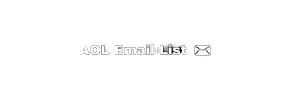This means avoiding sending generic emails that could apply to anyone. Here are some segmentation strategies to help you effectively target the right audience in your B2B email campaigns: Firmographics: Segment your email list based on firmographic data such as company size, industry, location, or revenue. This allows you to tailor your messaging and offers to specific business types or verticals. Job Roles and Titles: Segment your list based on job roles, titles, or departments within organizations.
Customize your content to address
The specific challenges, needs, and interests of different decision-makers or influencers within the company. Buyer Personas: Develop buyer personas France B2B List based on characteristics, behaviors, and preferences of your target audience. Segment your email list according to these personas to create more targeted and personalized messaging that resonates with each segment. Engagement Levels: Segment your list based on engagement levels, such as subscribers who consistently open and click your emails versus those who are less engaged. Tailor your content and frequency based on their engagement to maximize interest and response. Purchase History: Segment your list based on past purchase behavior. Identify customers who have made previous purchases, as well as prospects who have shown interest but haven’t converted.
Customize your email content to align with
their specific buying journey stage. Content Interests: Track subscribers’ interactions with your content, such as downloads, webinar registrations, or blog post AOL Email List views. Segment to deliver more targeted content and offers related to their specific areas of interest. Geographical Location: If relevant to your business, segment your list based on geographical location. This can be helpful for regional or localized promotions, events, or industry-specific messaging. Customer Lifecycle Stage: Segment your list based on the customer lifecycle stage, such as prospects, new customers, or loyal customers. Customize your messaging to address their specific needs and goals at each stage of their relationship with your company. Personalization Variables: Use personalization variables such as name, company name, or industry to create segments.

